Seat Configuration Help
Selecting the correct seat configuration is a critical step in your custom seat cover purchase. Please make sure your vehicle's seats match the descriptions on our website exactly, and use the terminology guide below to help.
50/50, 60/40, 40/20/40, Solid Bench, Backrest, Bottom
These refer to the most basic configuration of your vehicle's seats. The illustrations below are common configurations. There can be combinations of the above, such as 60/40 seat backs with solid bottoms.
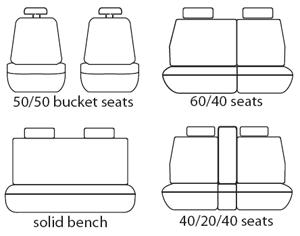
Power driver, manual driver, power passenger, manual passenger
Power driver and power passenger refer to seats with knobs to electronically adjust the seats back and forth.
Manual driver and manual passenger refer to seats where you must physically move the seats to make adjustments.
Fold-Flat Passenger Seat, Folding Pass Seat
Some vehicles have a passenger seat that will fold flat. The seat must fold forward all the way flat, like a table.
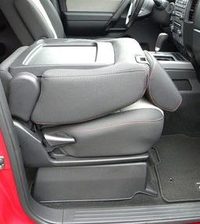
Removable Headrests
Headrests can be removeable/adjustable, where they telescope up and down. In these cases there would be separate headrest covers included (the headrest must be removed to install the seat back cover).
Headrest covers will not accommodate DVD/TV screens unless specifically stated in the description.
DVD Headrest Screens
Headrest covers will accommodate DVD/TV screens only if specifically stated in the description. If you have a DVD screen in a removeable headrest, you will need to disconnect any wires that travel between the headrest and the seat back in order to get the seat back covers on.
Built-in Headrests, Molded Headrests
Headrests can be built-in or molded into the seat back. These do not need separate headrest covers. The seat backrest cover accommodates the modled headrest.
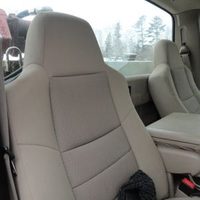
Recessed Headrests
Recessed headrests sink into the seat backrest somewhat. They are common with sport seats.
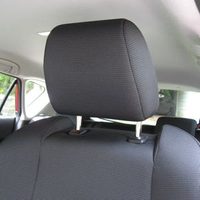
Non-Recessed Headrests
Non-Recessed headrests sit flush on top of the seat backrest.
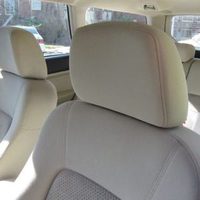
Side Airbags
If your vehicle's front seats have side airbags, your seat covers must have airbag allowances (flaps) for the airbag to deploy safely and properly. The existance of side airbags on your car seats is usually indicated by a small tag or imprint saying "Side Airbag" or "SRS" on the door side of your seat backs. If your seats have side airbags, please make sure our description of the seat covers you choose indicates side airbags ("w/side airbag"). Please contact us if this is not the case.
Console, Top Console
Consoles are almost always in the middle of the seat row and often open to store items. Folding consoles fold up to become a seat back and fold down to become an armrest, sometimes with cupholders. Console covers are included when they are in the seat cover description. Standalone consoles that are not part of the seat (commonly with 50/50 bucket seats) do not have covers.
Center bottom storage/bottom console
40/20/40 seats with a bottom console have a middle seat bottom (where you sit) that lifts open for storage.
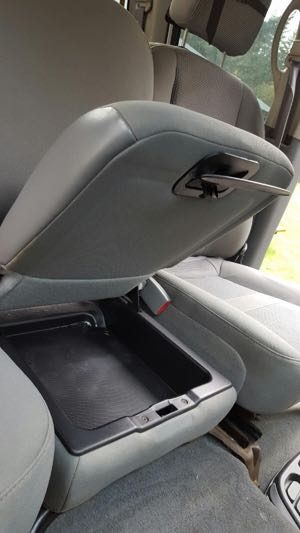
Built-In Seat Belts/Integrated Seat Belts
Vehicles with integrated or built-in seat belts have a shoulder belt that attaches to the top of the seat, rather than the side of the vehicle frame.
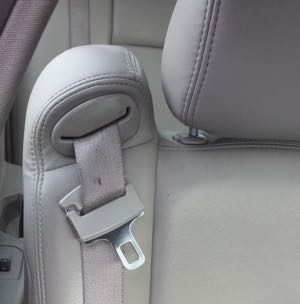
Lumbar
Seats with adjustable lumbar have a lever that moves the support in the bottom of the seat back. There are manual lumbar controls (usually a lever) and power lumbar controls (usually a knob or button that moves the support electronically).
Flap Liner
On some seats, there is a flap on the back of the seat that attaches the seat back to the seat bottom. This flap prevents the seat cover from being installed, you will have to lift the flap up in order to install the seat cover. This will be notated in the description and instructions on doing this will be provided.
Requires Professional Installation
Some rear seat covers will require the seat to be physically removed to place the cover on properly. In these cases, professional installation is recommended/required for safety reasons. These seats covers will be notated as requiring professional installation.






